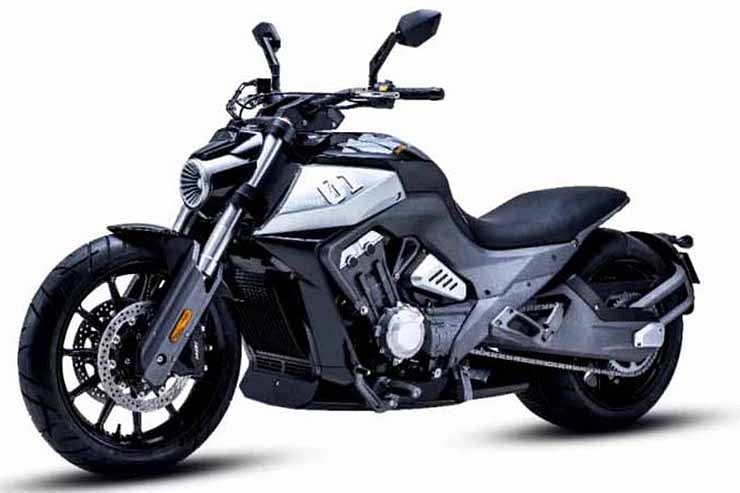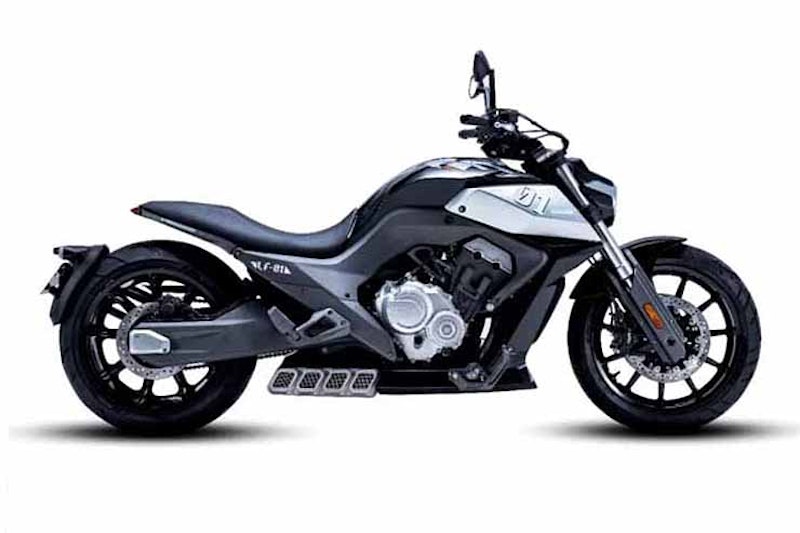Benda LF-01 debuts new Chinese four-cylinder engine
By Ben Purvis
Motorcycle Journalist
21.09.2020
The image of Chinese bikes as small, basic, single-cylinder machines is being bucked by a host of debuts at this year’s CIMA show and none does it more effectively than the new Benda LF-01.
Shown as a ‘concept’ the Benda LF-01 is the real-world version of the machine we scooped in drawing form back in July, and it’s lost none of its impact in the translation. While only a concept at the moment, the firm has every intention of putting the bike into production, and when it does the same engine will inevitably find its way into a host of other models.
The engine, as we revealed before, shares more than a little of its design with the Honda CB650 four-cylinder, but it’s not quite the bare-faced Xerox that it initially appeared to be when the first bare castings were pictured. Completed, with its cylinder heads and covers in place, it’s clear that there are both external and internal differences, even if the layout owes a lot to the Honda design.
Internally, the main difference is its capacity. Benda’s engine, as suspected before, is nearer 700cc, with an actual capacity of 680cc where the Honda engine comes in at 649cc. The difference comes from a longer-stroke crankshaft that increases the stroke from 46mm to 48mm. The Benda’s bore, at 67mm, is identical to the CB650’s.
The compression ratio is also identical to the Honda’s at 11.6:1, and in terms of performance the Chinese engine offers the slight advantage that you might expect from its larger capacity. Power is quoted at 72kW (96.6hp) at 12,000rpm, where the CB650R’s engine comes in at 70kW at the same revs (although the latter figure was chosen to ensure the Honda engine meets the limits imposed by the A2 licence regime in Europe rather than a mechanical limit of the engine itself.)
As you’d expect, the Benda’s engine is bolted to a six-speed transmission and features fuel injection.
The biggest change compared to the Honda engine, and most other four-cylinder bikes, is in the Benda’s intake design. We’re used to bikes having individual throttles for each cylinder, but the Benda four is designed more like a car engine, with an intake manifold connected to an intake plenum chamber with a single intake and just one, large throttle butterfly. It’s a system that is likely to limit outright power but should reduce cost and might improve torque. Intriguingly, it’s also a setup that could lend itself to supercharging or turbocharging…
Benda might not have gone that far, but the single air intake for the engine is routed straight through the headstock and to the bike’s headlight. Looking from the front, the light’s turbine-like design is actually a tiny central lamp surrounded by the ram-air intake.
The exhaust, with four rectangular exits from a single under-belly collector box is another unique detail.
The LF-01’s chassis appears to be cast aluminium, although the firm hasn’t revealed specific details of its design. Its long wheelbase and relaxed steering angle suggests cruiser-style handling, although the upside-down forks, radial Nissin brakes and ultra-wide tyres hint at more of a performance-oriented approach than the typical custom bike.
And those tyres really are wide. At the front there’s a 130/70 tyre on a large, 19-inch rim, while the rear is an imposing 310/35 on an 18-incher. That’s more than a foot wide. Does a 680cc engine with under 100hp need that much rubber on the road? Of course not, but it definitely helps with the bike’s imposing proportions.
The bike’s kerb weight of 215kg isn’t as hefty as its size might suggest, and promises decent acceleration, although the top speed is limited to 112mph, which is probably more than enough on a bike with the riding position and steering geometry of the LF-01.
When will it reach production? That’s unclear at the moment, as are Benda’s plans for exports, although the firm is interested in expanding outside the Chinese market.
Share on social media:

